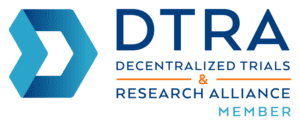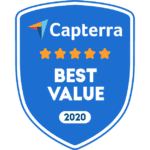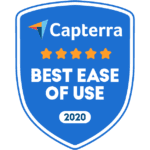A few years ago, eRegulatory systems were nothing more than sponsor-fed trial master files requiring sites to complete double, and sometimes triple, the amount of work. Anytime site regulatory personnel heard “electronic regulatory” they cringed at the idea of interrupting their day-to-day flow to maintain these systems in addition to their paper binders.
Due to these past experiences, the benefits of site-based eRegulatory systems were hard to imagine. With the introduction of new technology and advanced software systems to support it, sites now have every opportunity to utilize eRegulatory systems to streamline regulatory processes, maximize cost-effectiveness, and make study information much more accessible to all parties like never before!
Why the change to eRegulatory?
The transition to eRegulatory in our industry can be largely attributed to advancements in technology and the “mobile revolution,” providing individuals access to the internet and advanced mobile features in the palm of their hands. eRegulatory software has been designed to make clinical research more efficient by capturing electronic signatures, reducing the need for repetitive filing and clerical work, reducing paper and storage costs, and providing site’s consistency from study binder to study binder.
In the last few years, the industry’s attitude towards eRegulatory has shifted and now a rapidly growing number of sites embrace these new technologies to cut costs and increase efficiency. The development of innovative technology from mobile apps to user-friendly software has enabled sites and sponsors to save time and money while keeping all the important documents in one place, eliminating redundant tasks and reducing the possibility of human error. It is the combination of advanced technology and smarter software, that has allowed sites to truly move towards a paperless environment.
What should I look for in an eRegulatory system?
All eRegulatory systems are not the same. Comparing the features and capabilities of systems is critical, so you have to know what to look for to make a good decision. Below are some of the primary things to consider as you evaluate the various eRegulatory systems on the market:
User experience: User experience is one of the most important considerations when looking at systems. An eRegulatory system, designed to replace well-established paper systems, needs to provide an intuitive, efficient and user-friendly experience. Everything from navigation, document upload, Outlook integration, drag-and-drop folder and document sorting are all features that make the user’s job easier.
When it comes to features, there is a lot to consider when evaluating various systems. Here are some of the primary features that you may want to consider:
Reg Binder Format Template Set-up: The ability to set up your unique folder structure for your company’s regulatory binders that follow your specific company SOPs.
Document Versioning Control: The ability to track versions of documents. For instance, protocol and ICF updates that show the succession of documents, oldest to newest, and prevents users from accidentally accessing an old version of a file for current use.
Document Expiration Tracking and Notifications: Having the ability to assign an expiration to a document and system notification to alert your staff that a document has expired and needs updating.
eSignatures: Part-11 Compliant eSignatures for all study documents including capturing multiple eSignatures on documents, Outlook eSignature integration capabilities, and mobile app eSignature capture.
Mobile App: A mobile app that allows staff to view all regulatory documents, eSign documents as requested, review study inclusion/exclusion on the go and refer subjects with a click of a button in the mobile app. (Download the RealTime Mobile App in the App Store or Google Play)
Outlook integration: An integration that allows your staff to connect directly with their eRegulatory system to drag and drop documents into the regulatory binders, eSign documents and more
Monitoring Portal (multiple role types) (query system): Having a monitor/auditor-specific portal for multiple monitors/auditors that allow for complete document review, issuance of queries that alert staff, and a way for staff to respond and resolve issued queries. These portals allow monitors/auditors to have remote access to the eRegulatory binders which will cause your sponsors and CROs to fall in love with your eReg system.
Central Documents: A place to store non-study-specific documents such as temperature logs, company training, calibration records, etc. Central documents should be easily pushed to study binders as-needed.
Staff Documents: A professional, educational, and training tracking system (PETS) to store the documents for each staff member, study provider, investigator etc. These documents would include CVs, licenses, GCP training, IATA certifications and more and would easily be pushed into all studies that the staff member is associated with for view by monitors and auditors. Of course, staff documents should also have version control and expiration dates tracked.
Subject Documents: A place to store subject-specific documents such as medical records, signed ICFs, and other study-specific subject documents.
Compliance with Part-11 and HIPAA: In order to meet FDA Part-11 and HIPAA compliance, your eRegulatory system must provide several important features such as User Audit Trails, User Password Rules and Controls, Encryption of Data in motion and at rest, validated software, and compliant eSignatures, just to name a few. These are required and will be verified by the FDA and must be present during an audit.
Additionally, only a few eRegulatory systems on the market have third-party Part-11 review documentation that confirms that all of these requirements are met. Don’t gamble your site’s integrity with a system that does NOT have a validated third-party assurance letter.
Communication/Integration with other systems: The last thing site personnel need is yet another portal to log into. Will your site team have to launch into multiple systems to manage eRegulatory subject recruitment, CTMS, or pay accounts, each with a different username and password? Having to function in multiple systems will put a strain not only on user experience but possibly work productivity itself.
The idea of using one system and one login to access all your sites needs is completely possible and being able to pair products and system integrations are key.
Customer Support: With the idea of pairing separate products and integrating systems together comes the need to access different software support teams. However, if you are using two different systems (i.e., CTMS and eRegulatory by different vendors) you will likely not enjoy the same level of integration and features that would come from having both systems in the same platform by the same vendor. Your staff will also have to work in separate systems even if there is some level of integration for sign-on and data sharing.
Pricing, pricing, pricing! Maximizing cost-effectiveness also includes pricing. eRegulatory systems typically have a start-up, in addition to a per-study fee. Those rates can possibly be adjusted depending on other products you use with the company or if you are contracted for a set amount of studies.
Contracts can be a bit tricky though. Be aware of contracts that lock you into a lower rate for the per study fee but obligate you to use their system, whether you like the system or not, until you reach your set amount of studies. Some systems charge annual storage fees per study, so over time you may be paying a very large annual fee for storage that will grow larger each year. These storage fees can really add up so consider a system that has no annual storage fees!
When choosing an eRegulatory system consider asking for a demo to test the interface and the overall user experience. Be sure to inquire about possibilities of integrating with other systems and if they’ve had issues with connectivity in the past. If this is the case, ask how long it would take to solve said connectivity problems. Finally, before signing, look out for hidden storage fees or binding contracts.
Unparalleled user features and experience, great customer support, and competitive pricing are just a few of the advantages of RealTime-eDOCS for paperless eRegulatory. All of our solutions (CTMS, eDOCS, eSOURCE, TEXT and PAY) can be used as stand-alone systems or can fully-integrate with each other! If you are interested in learning more about our products call (210) 852-4310 or click HERE.






